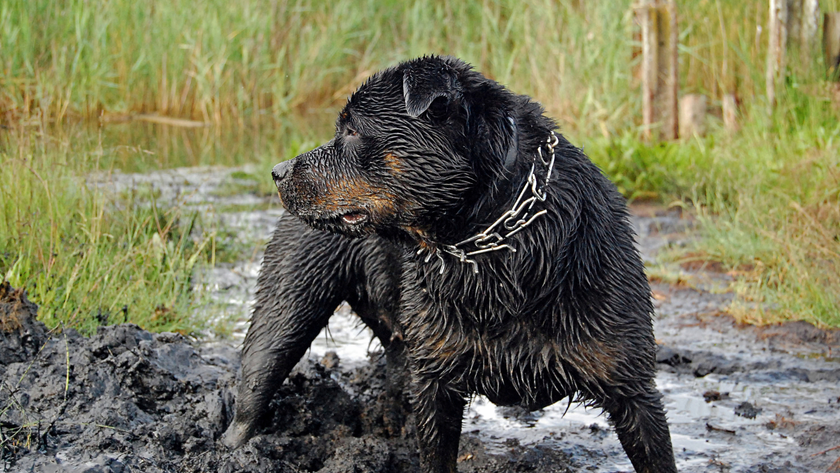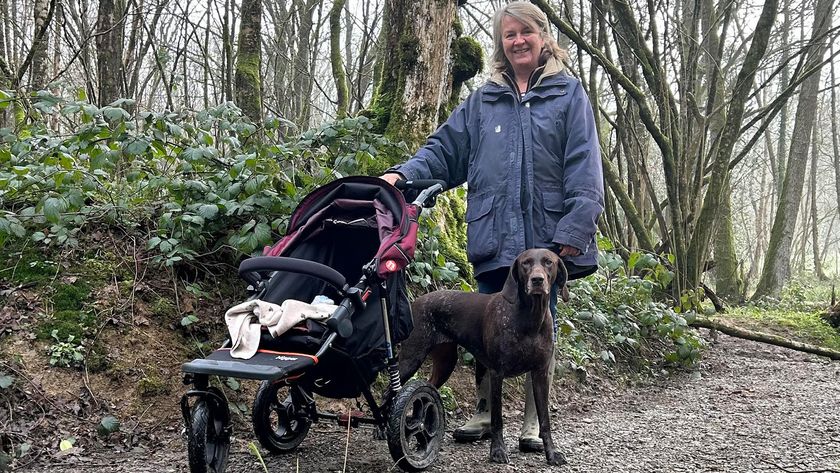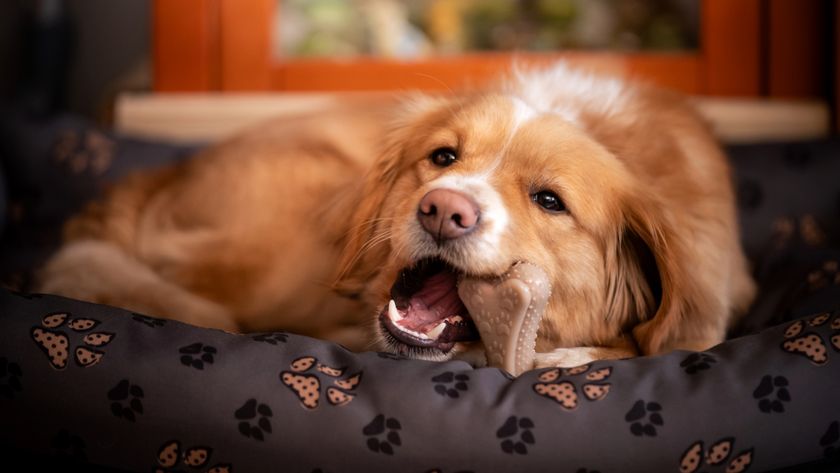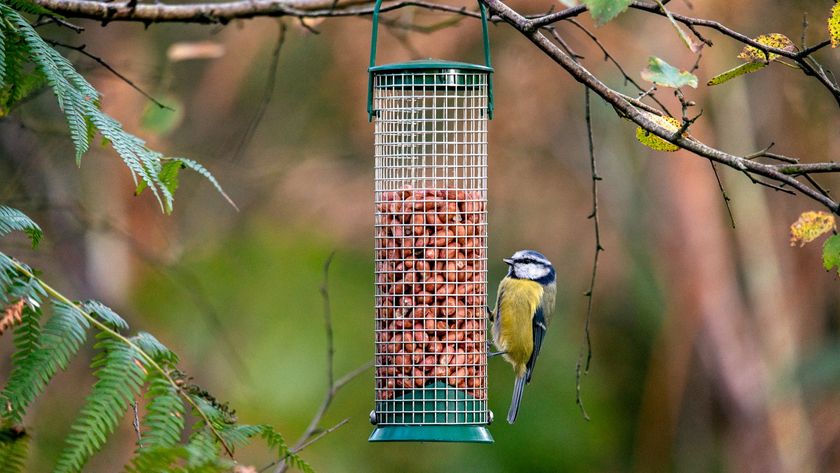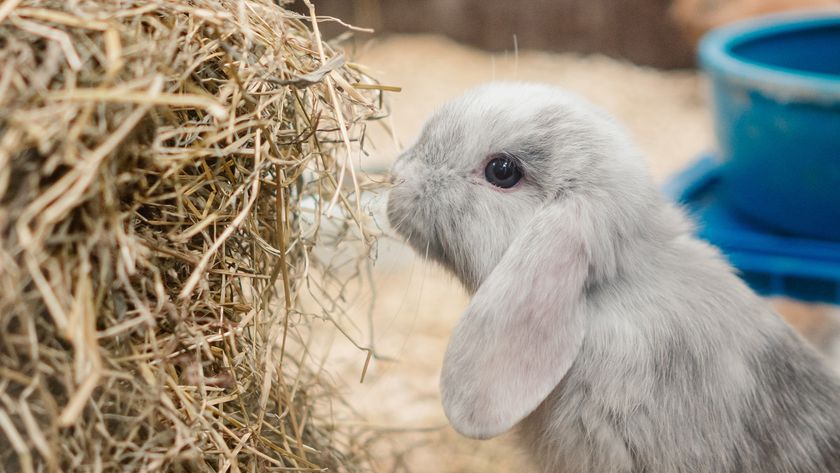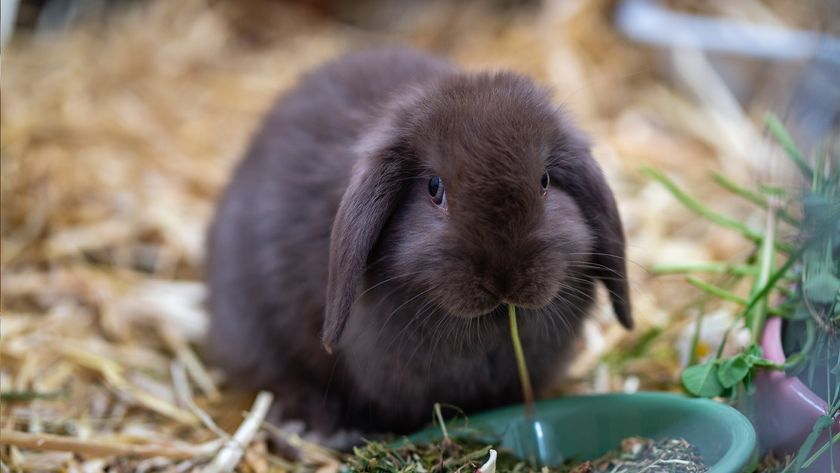Best dog harness for pulling 2025
Getting your hands on the best dog harness for pulling will let you enjoy a stress-free stroll with your pup.
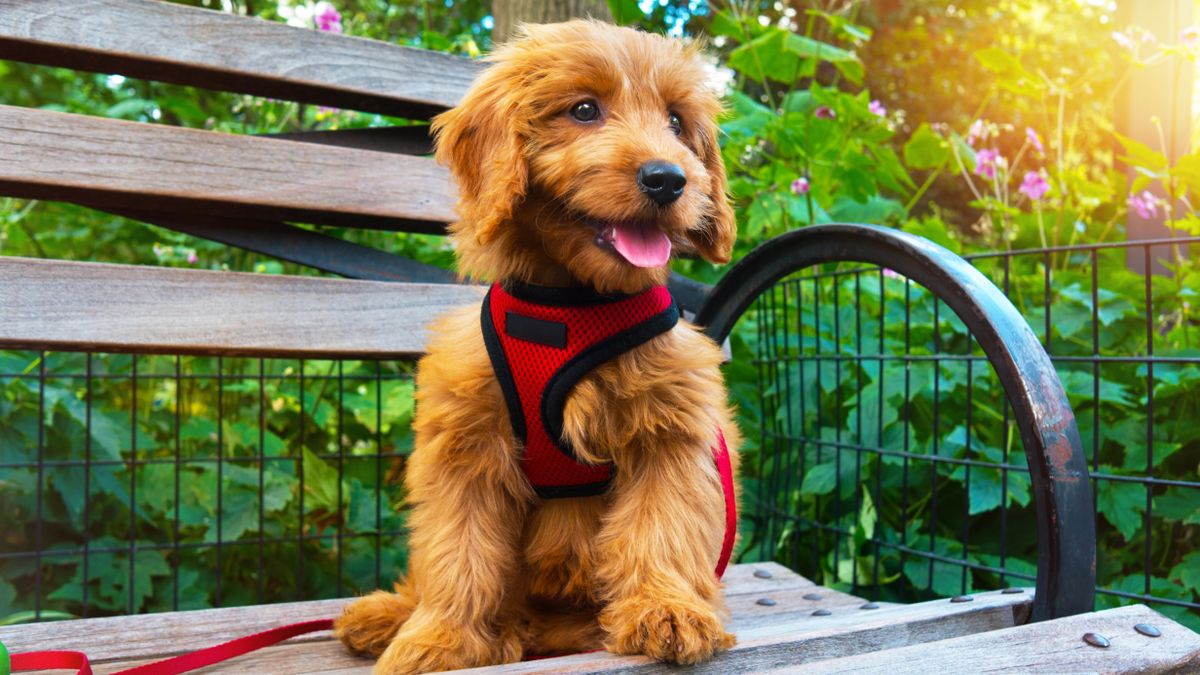
Having the best dog harness for pulling on hand can be a real lifesaver if you have a dog that tends to take you for a walk rather than the other way around!
No matter how much you love your canine companion, having them pull or lunge every time you leave the house can make those daily strolls more stress-inducing than stress-relieving. Thankfully, when it comes to knowing how to stop a dog pulling on a leash, having the right harness can make all the difference.
The harnesses in this guide are designed to prevent your dog from lunging forward by placing gentle pressure on their shoulders. When paired with training, this discourages them from pulling and makes it more likely they'll stay by your side.
Just like the best dog harnesses for non-pullers, all of the products below have been carefully selected based on safety, comfort and visibility. Because your dog is a puller, we've also made sure these harnesses offer you maximum control when you're walking your pup.
The best dog harness for pulling 2025
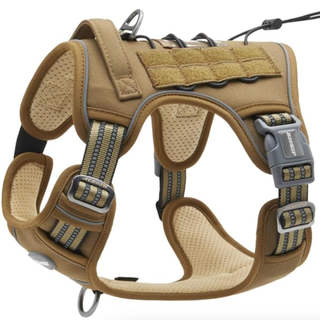
Best overall dog harness for pulling
This is our top pick for a dog harness if your pup tends to pull hard on the leash when you're out for a walk. It features two metal leash attachment points for maximum control — a no-pull front ring that's ideal for training and a back clip that's perfect for casual strolls.
Easy to adjust, the harness secures at the sides and has two quick-release buckles and four fully-adjustable metal rings that enable a snug fit without compromising mobility.
Built to last, the Auroth harness is crafted from durable nylon and reinforced with sturdy stitching. A heavy-duty vest that can withstand even the strongest pulling movements, the padded pressure points and breathable mesh will ensure your dog stays comfortable.
This versatile harness also comes with Molle strips on both sides so your dog can carry essential gear. It's also compatible with Molle pouches which will allow you to attach a dog bowl or water bottle. Available in a range of sizes, this harness is suitable for dogs weighing up to 135lbs.
Reasons to buy: Handle allows for easy control, effortless release and secure closure, strong metal clips to withstand pulling and tugging, reflective strips for enhanced visibility.
Reasons to avoid: One of the more expensive harnesses on the market.
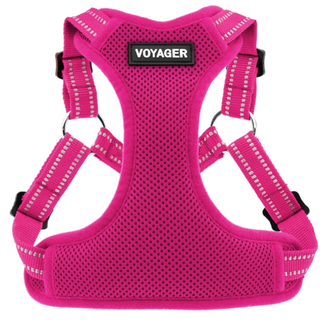
Best budget buy
Want a great no-pull harness but don't want to part with a ton of cash? Then this little beauty from Best Pet Supplies is well worth considering. Offering outstanding value for money without compromising on quality, this harness clips at the back and comes in a range of colors and sizes to suit every pup.
Featuring 3M Scotchlite reflective material on the straps, this harness offers maximum visibility on those early morning and light night walks. The all-weather air mesh is soft and breathable and the lightweight fit makes it ideal for strolls in any season.
The D-ring leash hook and strong clips offer a double layer of security and the harness itself is easy to get in and out of — simply get your dog to step in, clip and go. Both the neck and chest straps are fully adjustable, ensuring a comfortable fit for every pup.
Reasons to buy: Excellent value for money, extensive range of colors options available, reflective webbing for high visibility in all weather conditions.
Reasons to avoid: Some users found the sizes run small, so be sure to use the size guide and measure your dog before you buy.
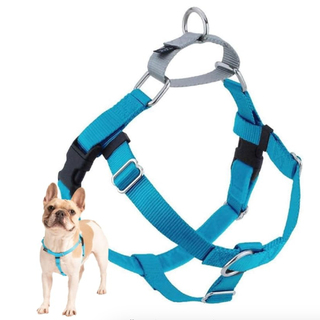
Best easy-on harness
Does your dog hate stepping into a harness? If so, the 2 Hounds Design Freedom No Pull Dog Harness is our top pick for ease of use. Unlike a lot of traditional harnesses that require your pup to step in or have the harness go over their head, this game-changing design wraps around their middle and clips at the sides, making it a breeze to put on and take off.
The harness offers superior control and comfort thanks to the Swiss velvet lining and the four adjustment points that allow for even pressure distribution. With two connection points, secure straps and a sturdy front O-ring, you'll feel confident guiding your dog on daily walks and during training sessions.
Fitted with a Martingale loop that creates gentle pressure to discourage pulling, the highly adjustable fit makes it difficult for dogs to escape and because the harness sits below the trachea but above the leg muscles, you don't need to worry about choking, gagging, rubbing or chafing.
Reasons to buy: Easy to take on and off, comfortable fit, highly adjustable fit, fantastic for preventing pulling.
Reasons to avoid: More expensive than others in this guide.
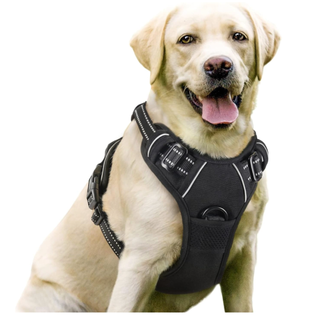
Best for comfort
One of the most comfortable harnesses on the market, the back-clip Rabbitgoo is made from sturdy nylon and comes fully padded with soft cushioning to protect your pup's skin. The breathable air mesh will ensure your dog stays comfy all day long and the bright reflective strips provide outstanding visibility on dawn and dusk walks.
With four adjustment points, this harness is easy to customize while retaining maximum mobility. It also has two metal leash rings to help make dog walks safer. The front one is brilliant for preventing pulling and undertaking training sessions while the back one is a great option for casual walks or hikes.
This overhead harness is easy to put on and it's also lightweight and easy to clean. By covering around the chest and back securely, it easily distributes any force that comes from pulling attempts and makes it easier for you to retain control.
Reasons to buy: Affordable, durable, easy to put on and take off, offers an excellent level of control.
Reasons to avoid: Not suitable for the smallest breeds.
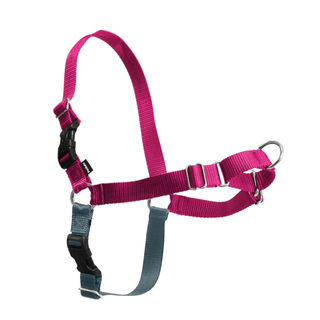
Best step-in harness
With sizes available to suit most dogs, the PetSafe Easy Walk No-Pull Dog Harness is our pick if you're after a flexible design that offers both a step-in and over-the-head option.
Featuring quick-snap shoulder straps and a different colored belly strap that give you an immediate visual on which way round the harness goes, it's simple to fit and because it has less coverage than other harnesses on the market, it's super breathable and lightweight to wear.
The martingale loop design means gentle pressure is placed on your dog's shoulders if they attempt to pull or lunge while you're out on a walk and the front leash attachment allows you to guide your dog safely whether you're doing a training session or out on a gentle stroll.
Reasons to buy: Available in a range of different colors and sizes, comfortable fit, good level of control.
Reasons to avoid: Lack of coverage means pressure is not distributed quite so well.
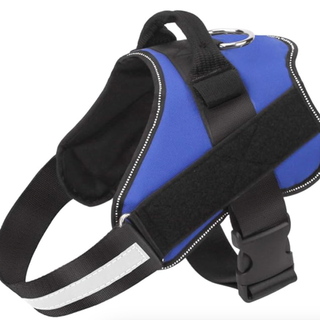
Best reflective harness
If maximum visibility is at the top of your harness wish list, this gem from Bolux is well worth considering. The reflective straps and stitching will ensure your dog is always seen when you're out and about and there are a range of bright colors on offer to make them pop even more.
Offering a high level of coverage, comfort and support, the Bolux harness is a fantastic training, hiking and hunting harness that offers you a high level of security and control.
It features an adjustable chest strap with a snap on buckle that secures at the side, breathable material, and a sturdy handle to give you control of your dog while you're attaching the leash and extra control when the leash is fitted. It's also strong and durable and wear-resistant.
Reasons to buy: Excellent visibility in all lighting and weather conditions, good quality at a reasonable price.
Reasons to avoid: Velcro may need to be replaced in time.
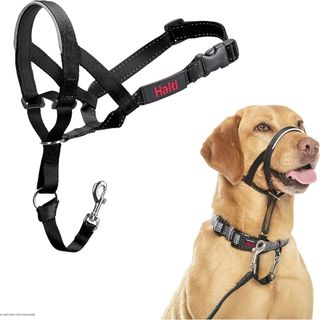
Best face harness
If you want an alternative to a traditional harness, many experts swear by Halti headcollars which make it easier for you to guide your dog. This one from Company of Animals is a great affordable option that comes in a range of colors and sizes.
Made from strong but lightweight nylon webbing, this Halti headcollar has a padded neoprene nose band for maximum comfort and it won't interfere with your dog eating, drinking or panting.
Adjustable to ensure you get the perfect fit, encourage your dog to place their nose into the headcollar, gently connect the neck strap, use the slider to get the right fit for your pup and then attach the safety link to your dog's collar.
Fitted with reflective accents for visibility in low light, the headcollar has a strong and durable design and will help make training safe.
Reasons to buy: Effective and comfortable design, easy to fit and adjust, inexpensive.
Reasons to avoid: Some users found that the headcollar wasn't strong enough for big dogs who are heavy pullers and broke too easily, so it may be best suited to smaller dogs.
How we chose the best dog harness for pulling
To compile our list of the best dog harnesses for pulling, I primarily considered how effective they are at preventing pulling and lunging, the amount of control each harness offers you as a dog owner, and how secure and comfortable they are for your pup to wear.
I understand that everyone will be looking for different things in a harness and that every dog has their own preferences as to the types of dog harness they want to wear, so I've included a range of options in this guide to tick all the boxes.
You'll find step-in harnesses, designs that go over the head, and harnesses that avoid both of these all together and instead wrap around the body and clip into place. Some offer maximum coverage while others touch less points on your dog's body while still doing a great job of preventing pulling. If you’re unsure where to start, we’ve put together guides for how to put on a harness and how to use a dog harness.
How to choose a dog harness for pulling
When it comes to choosing a dog harness specifically to reduce pulling, there are a few things you want to keep in mind.
First up, consider how easy it is to put the harness on and take it off. This won't be an issue for all dogs, but if your pup doesn't like stepping into a harness or having it go over their head, you might prefer to select one that wraps around their body and clips into place.
Secondly, make sure you read up on how to measure your dog for their harness to ensure you get the right fit. If the harness sags, your pup will still be able to lunge forward. Similarly, if it's too tight, their movement will be restricted. Check that the harness can be adjusted for a comfortable fit.
Thirdly, we recommend looking for a harness that has a lot of padding. This is particularly important for dogs that pull as padding provides comfort and reduces chaffing. Some front-clip designs don’t feature padding, but often once your dog understands it, the padding is no longer necessary.
Finally, if you regularly walk at dawn or dusk or you live in a climate where visibility is often poor due to frequent rain, opt for a harness with plenty of reflective strips and sticking. This will help your dog to remain visible, which is vital if you walk in areas where they may try to pull across the sidewalk and come close to busy main roads.
What is the best harness to stop a dog from pulling?
It's always a good idea to first understand why your dog is pulling before you invest in a harness as this can help inform your decision. Hyperactive dogs tend to lunge more and reactivity in dogs can also cause excess pulling. If you feel either of these may be behind your dog's pulling, be sure to check out our guides to how to calm a hyper dog and how to calm a reactive dog.
We wanted to know if our expert team of vets had any tips when it comes to selecting a harness when your dog is a puller, so we asked Dr. Rebecca MacMillan for her advice.
"If your dog pulls you while out walking, then choose a harness with a front attachment for their leash," she says. "This helps to reduce the amount of force the dog can pull against you with. The position of the attachment causes your dog to turn their body towards whichever side you are standing with the leash. This slight turn reduces the intensity of their ability to pull.
This is different from a back attachment harness, which allows your dog to lean their weight fully into the harness (much like a dog pulling a sled). So, you may find that these types of harnesses are less suitable for your pet.
An alternative approach would be to use a Halti (face harness). Worn like a horse wears a head collar, a Halti helps you to gently steer and guide your dog, giving you greater control over their direction of movement."
Do dog harnesses help with pulling?
The answer to this, rather unhelpfully, is both yes and no. No-pull harnesses can work well alongside other things, such as avoiding the most common loose leash walking mistakes that can encourage pups to pull and using effective training methods.
"Some harnesses can help reduce the intensity of your dog's pulling and make them easier to handle, so they are helpful to a degree," says Dr. MacMillan. "But remember, that these are best used alongside positive behavioral training, as some dogs will pull regardless of what equipment they are walked in."
How do I get my dog to stop pulling on the leash?
"Your dog's training is what you really need to work on to stop them from pulling," Dr. MacMillan explains. "Although the right walking equipment can help in part, there is not usually a magic quick fix to this problem."
Some owners may be tempted to choose a harness that tightens as your dog pulls; however, these rarely work and are considered an aversive training method. Instead, you should focus on working with a dog trainer or behaviorist if you need help getting your dog to walk with a loose leash. Training methods should include positive reinforcement, with plenty of praise and treats for the correct behavior."
We understand that not everyone can afford to hire a professional trainer, so here's 27 practical tips for training your dog on your own. Or, if you do want to enlist the help of an expert trainer, here's how to spot dog trainer red flags to ensure you're working with someone who's suitably qualified.
In this feature, we answer 'Are harnesses bad for dogs?'

Kathryn has a wealth of experience when it comes to researching and writing about the best products for pets. Plus, she's a pet owner herself so she knows how to cut through the noise and find the products that will really make a difference in the lives of our fur friends (and the humans who love them!)

Rebecca is a vet surgeon who graduated from the Royal Veterinary College in 2009. She has a wealth of experience in first opinion small animal practice, having done a mixture of day-to-day routine work, on-call emergency duties and managerial roles over the years. She enjoys medicine in particular and she is proud to have recently achieved a BSAVA postgraduate certificate in small animal medicine (with commendation). She writes on various feline and canine topics, including behavior, nutrition, and health. Outside of work and writing she enjoys walking her own dog, spending time with her young family and baking!
PetsRadar Newsletter
Get the best advice, tips and top tech for your beloved Pets

Kathryn is a freelance writer who has been a member of the PetsRadar family since it launched in 2020. Highly experienced in her field, she's driven by a desire to provide pet parents with accurate, timely, and informative content that enables them to provide their fur friends with everything they need to thrive. Kathryn works closely with vets and trainers to ensure all articles offer the most up-to-date information across a range of pet-related fields, from insights into health and behavior issues to tips on products and training. When she’s not busy crafting the perfect sentence for her features, buying guides and news pieces, she can be found hanging out with her family (which includes one super sassy cat), drinking copious amounts of Jasmine tea and reading all the books.

